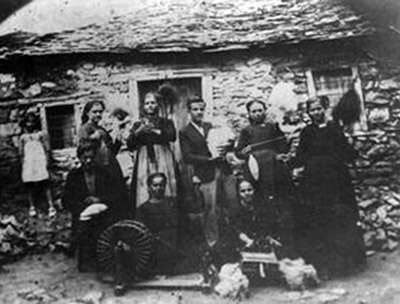
Family in Kato Vermio, 1947. Women are pictured with a distaff, spindle and spinning wheel – tools used for spinning wool. Today, Kato Vermio is the epicentre of Vlach settlements in the Prefecture of Imathia. Until the 20th century, it was the third largest town after Veroia and Naousa in the area that today encompasses the Prefecture of Imathia. (Foundation of the Museum for the Macedonian Struggle)